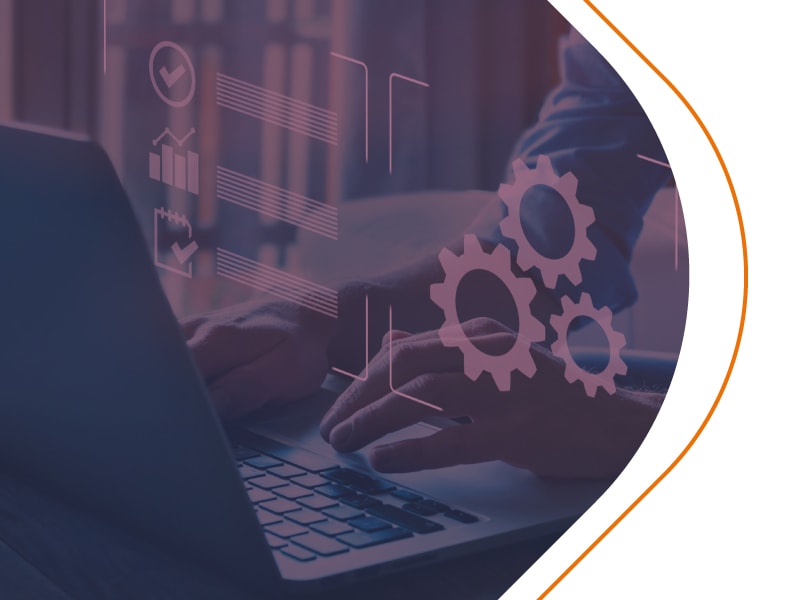What is Maturity in an Automation Journey?
Robotic Process Automation (RPA) has become the go-to automation technology for enterprises across the globe today. However, only a few enterprises can claim to have achieved maturity in their automation journey. What does maturity in automation mean?
Automation maturity can be defined by 4 dimensions –
- Scale – The most used, but often misleading parameter. Usually, enterprises who have deployed a lot of bots (in 1000s) are considered to have achieved a certain maturity in their automation journey. However, it’s not necessarily an accurate representation of maturity. The right scale is measured by not just the number of bots, but the impact that it has had on the business.
- Security – While the true scaling-up can help businesses achieve the right results, another important aspect of the automation maturity is how security is handled during the automation. RPA bots handle sensitive data, access business-critical applications, and perform high priority business processes. A true mature automation setup would include the right controls and mechanisms to ensure the right data and operational security.
- Reliability – Enterprises with a mature automation program depend on bots to execute critical business tasks. To make this feasible, the automation setup must be reliable for the SLAs to be maintained. Multiple factors such as strong program management, robust operations and reliable support structure and scalable automation platform come into play.
- Governance – A well-defined governance overseeing the development, deployment, monitoring, and management of bots is a sign of a mature automation program. It provides the assurance of quality, minimized risk, and no rework. While the model of governance could be centralized or de-centralized, robust governance ensures the successful scaling of automation programs.
A mature automation program is reflected in real business results, not just in terms of the number of bots. Significant labor-cost value (usually in Millions of man-hours saved) is a major business benefit, which the organizations can realize through re-deployment of the high-value human workforce or actual operational cost reduction. A well planned and executed automation program also provides other business values like better sales, higher revenue collections, and better compliance. For e.g. a large global electronics manufacturing client achieved 21% better collections in their F&A department within 3 months of automation implementation with the AssistEdge RPA platform.
What is needed to achieve this maturity?
- Clear business goals and vision – Executive sponsorship and vision for automation programs are crucial to achieving scale and maturity. Usually, automation programs that are part of bigger business transformation initiatives have better chances of success. For e.g. in the large electronics manufacturing client, the automation program is part of a 5-year Hoshin strategy to transform their F&A operations. This ensures that the program has visibility and oversight all the way to the CFO office, thus ensuring a clear business involvement.
- Cultural adoption – It is important that the automation program is adopted by the organization as part of its culture and is not looked at as an external initiative. Embedding the improvement and automation culture, not just in the program team, but across business teams goes a long way in ensuring scale, success, and adoption of the automation.
- Program Governance – Implementation of a structured governance program to deliver on planned objectives is critical. The best method to achieve this is the CoE (Center of Excellence) model. A central team is formed across different business groups to monitor and manage the program, but the design, development, and deployment are decentralized at the individual business group. Large automation programs usually have multi-layer with regular steerco meetings with different teams involved.
- The right Automation platform – A scalable and mature automation program can only be built on a stable and feature-rich automation platform. Key features of such platforms include –
- Ease of Configuration – Out-of-box configuration capabilities for all enterprise applications, best-in-class experience and robust enablement to democratize automation
- Centralized Bot Governance and monitoring – Platform portal to remotely manage and monitor a huge number of robots
- Enterprise-Grade Security and Reliability – Features like Advanced Credential management and role/access control and advanced debugging
- Business Analytics and Dashboards – State-of-the-art analytics and reporting on the Bots performance and business results
- Right operations and services partner – Any large automation program involves multiple teams – different business groups, operations teams, infrastructure team, RPA platform team, Services team, etc. A mature program is a result of good chemistry between all these teams and a good governance structure that allows seamless working. It always helps to select the right partners that have the trust of the business teams. One key aspect of choosing the right partners is the readiness to take ownership of business outcomes. Thus, the vendors should have their skin-in-the-game”.
Conclusion
A truly mature automation program is measured, not by the number of bots, but by the business results it helped achieve. It starts with the executive sponsor setting an aspirational target for the team and setting up the right vision for the program. Multiple teams work seamlessly governed by a central COE team in delivering automation at scale. The organization stands to get significant business outcomes from a mature automation program, far beyond the expected operational cost reduction.



Shrikant Deo
Director - Product Management, EdgeVerve
More blogs from Shrikant >